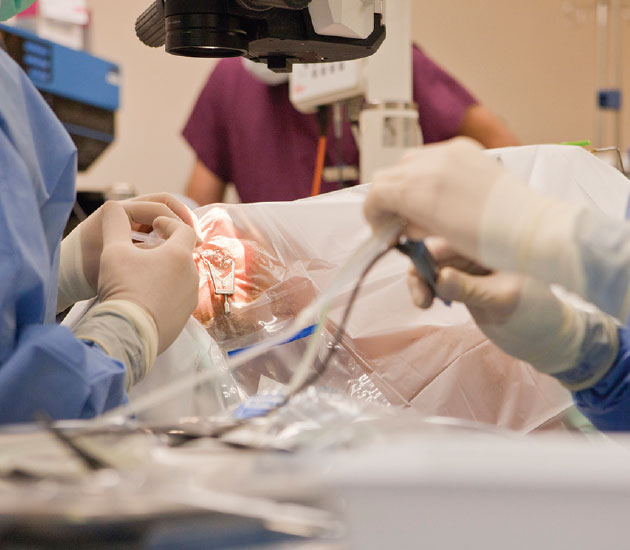 |
A colleague of mine, an amazing and inspirational surgeon, once said, “You only have so many Julys in you.” He was referencing, of course, the annual changeover of second-year residents to surgical third-year residents and the stress involved with taking new surgeons into the OR. No matter how your local institution handles its resident training, the third and final year of residency is the heavy surgical year. At Wills, we have a large number of surgeons, both academic and in private practice, who participate in the surgical training of our residents. Some have the stomach for July surgery, some don’t. I have not had that concern. Maybe it’s because I have no restraint when it comes to yanking the resident out of the chair should it appear necessary. Patient outcomes shouldn’t take a back seat to teaching. We can do both, but it’s more work. Need it be?
It does bear some discussion of the history and the future of resident surgical education. I remember once worrying that a better medically educated populous would rebel at the idea of surgeons-in-training doing their surgery. An article out of the British NHS a few years ago documented that, when presented with a choice of having their surgery performed by a resident or an attending, patients chose the latter. Not surprising. However, if we teaching attendings are doing our jobs, should this be an issue?
There has certainly been a lot written about how to train residents to perform surgery, specifically cataract surgery. We owe a debt of gratitude to Uday Devgan and his Cataract Coach series of videos, including his most recent post addressing exactly this topic, as well as to those of you out there in the trenches quietly teaching cataract surgery, resident by resident. But there remains a wide range of opinions on the best and, shall we say, “least traumatic” method to get our new surgeons to a point of competency.
Of course, the tried-and-true approach begins with didactic training, moving on to wet labs, videos and surgical simulators. All of this helps of course, and as we’ve seen at Wills the simulators train certain steps, such as capsulotomy, very well. But a simulator isn’t an eye, and there are many small considerations that only repetition under expert guidance can convey. Many residencies introduce the steps and techniques of surgery one by one, making for a gradual entry that requires the resident to master each step before moving on. Other programs present the opportunity to do the entire procedure from the get go. Which is better? We really don’t know. And better for whom? The resident? The attending? The patient? How do we achieve the ideal balance?
It’s a tough question, and one that likely we’ll never answer since there are so many variables at play. Every patient and cataract is different, so quantity is essential in order for residents to get a broad experience of what they’ll face in practice. Every attending is different in teaching style and effectiveness. And, of course, every resident is different in terms of attitude, level of engagement, motor skills and proprioceptive ability. It amazes me that we now don’t routinely test our resident applicants for visual acuity, depth perception, color vision and manual dexterity. We used to, but in our brave new world it could be considered discriminatory. (Sigh.) I’ve sent more than one resident up to Pediatrics to be checked for depth perception after a tough case—or, alternatively, suggested a career in neuro ophthalmology. In the end, though, we graduate just about every one of them with the education and numbers they need, and with, at the very least, a decent OR skill set. While I consider our resident training in cataract surgery to be highly successful, it still seems like a medieval apprenticeship, requiring so much individual and personal engagement. This is kind of puzzling in this age of technology, but after 35 years of training residents, it’s still very gratifying.
So bring on July—and August too. I think I have a few more of them left in me.





